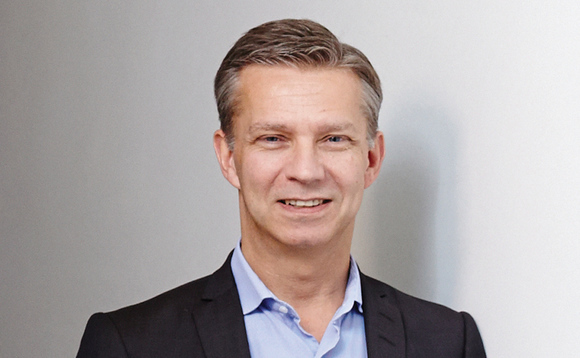
AP6's Swartling warns of the challenges of direct investing

Karl Swartling of SjУЄtte AP-fonden (AP6) speaks to Mikkel Stern-Peltz about the fund's move into direct investments, and warns of the challenges of this change in strategy
AP6 has been an avid investor in Nordic private equity funds since it was founded in 1996 with a focus on unlisted assets. AP6 has adjusted its strategy in recent years to increase its focus on buyouts, through a combination of direct investments and funds. The strategy removes the level of separation afforded by the traditional GP/LP structure, bringing the pension fund much closer to its assets, and making AP6 directly accountable for ensuring responsible ownership.
Mikkel Stern-Peltz: What has the reaction to AP6's combined investment strategy been?
Karl Swartling: Ours is a pretty unique approach, and we're the only ones doing it in the Nordic region with the type of money we have. I don't think anyone knew how this would be received in the market, but today we can conclude that it works extremely well.
We get superb leverage on our relationships and we don't end up in conflicts or competition, as we mostly strive for an active minority position. We get a very good flow of opportunities and we can then decide.
We have a dedicated team working with direct investments, so we can also source things and bring them to others for syndication.
Since we are in the Nordic market, which is not a huge market and people are well-connected, we know about and hear about what is happening. So we have situations where we can see a deal or anticipate a possible deal and then we can decide who would be a good match to act on it with.
MSP: Why are direct and co-investments attractive to AP6 compared to only investing through funds?
KS: Pension funds managers going from passive allocation to active management is something we see happening everywhere internationally.
Being a player that can both invest directly and indirectly gives us a different strength in relationships and a different position in the market relative to the other players. Our relationship to the GPs we work with, where we can also be an extremely professional and fast co-investor, is strengthened.
It increases our ability to influence and our voice is heard a little more. We're still a small player ,but I think what we say is taken a little more seriously because we're active and collaborate on both sides.
Another reason is looking at pure cost. Management fees across our investments are naturally lower. There are also extremely strong synergies between the skillsets for doing fund investments and direct investments.
We also get a different ability to optimise our portfolio. We're more flexible when we can also work with direct investments in building the portfolio we want to have.
MSP: Will we see more Nordic pension funds try to emulate the model AP6 uses?
KS: Yes. There aren't that many players in the Nordic region, but clearly the impression from the market in general is that it's a direction people would like to go.
If you've previously purely been doing fund investments, it's a really challenging journey to take the step into direct investments. You have to build up that set of competences. We have them in-house and have for a long time but, even if there are synergies, there are also distinct differences in terms of the experience you have when assessing specific companies, compared to a management team that will find the companies for you.
I hear a lot of interest in going in that direction, but I'm also warning everyone it's not going to be easy and you have to respect the resource and competence needs required to do so.
There is another word of caution that one needs to be aware of – and this is even stronger if you're a pension fund representing the public – the day you own shares directly in the company, you reach a totally different threshold of responsibility.
You have to take the direct investments extremely seriously in terms of responsibility as an owner, and have the governance and ownership processes in place to be able to fulfil that role. We have spent a lot of time ensuring that works at AP6.
I don't mean just in terms of the media, but also as an owner and you have to be equipped for that. We learned it the hard way: it doesn't matter whether we, as a pension fund, own 0.5% in the company or 39%. When, or if, something happens to that company, or if they're totally behind the curve in terms of sustainability work or CSR, we are responsible as an owner. Especially if you're a public owner, it could backfire.
Latest News
Stonehage Fleming raises USD 130m for largest fund to date, eyes 2024 programme
Sponsor acquired the public software group in July 2017 via the same-year vintage Partners Group Global Value 2017
Stonehage Fleming raises USD 130m for largest fund to date, eyes 2024 programme
Czech Republic-headquartered family office is targeting DACH and CEE region deals
Stonehage Fleming raises USD 130m for largest fund to date, eyes 2024 programme
Ex-Rocket Internet leader Bettina Curtze joins Swiss VC firm as partner and CFO
Stonehage Fleming raises USD 130m for largest fund to date, eyes 2024 programme
Estonia-registered VC could bolster LP base with fresh capital from funds-of-funds or pension funds









